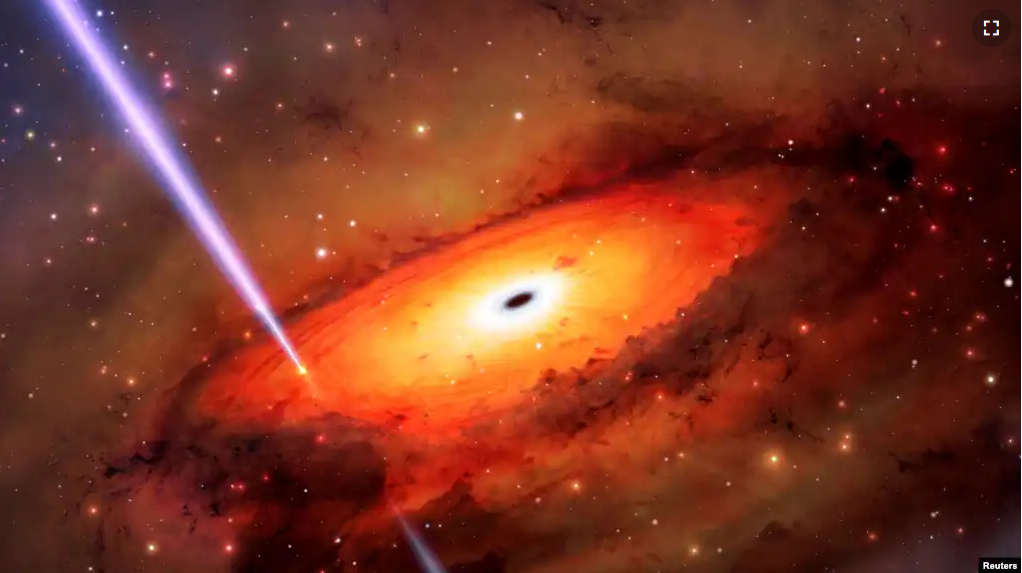Scientists recently observed an extremely powerful explosion coming from an ancient galaxy.
The astronomers suspect the gamma ray burst they saw was the result of two neutron stars crashing into each other. Neutron stars are the remains of massive stars that have collapsed into themselves. They are small in size but extremely heavy.
The stars are in an area dense with space objects near a supermassive black hole at the center of their galaxy.
“In order to explain the gamma-ray burst, it has to have been a compact star, so not one like the sun,” said study lead writer astronomer Andrew Levan of Radboud University in The Netherlands. The study appeared in the publication Nature Astronomy.
Scientist Wen-fai Fong of Northwestern University in Illinois co-wrote the study.
“Gamma-ray bursts are the most powerful explosions in the universe,” she noted.
The researchers said that gravitational forces from the black hole may cause nearby objects to move around a lot, increasing the chance of collision.
When very massive stars, those more than 10 times larger than the sun, die in explosions, they can become neutron stars or even black holes. Smaller stars like the sun leave behind what are called white dwarves.
These new observations show another path to star death.
In Nature Astronomy, Levan said, “The idea that stars also can die through collisions in extremely dense regions has been around since at least the 1980s. So we’ve been waiting for 40 years for the signatures to be found observationally.”
Scientists used the data from different telescopes to study the gamma-ray bursts, which took place over 3 billion light years away. A light year is about 9.5 trillion kilometers.
Most of the galaxy’s stars are billions of years old. Fong wrote: “The galaxy is what we call a ‘quiescent’ – a galaxy that is not actively forming stars at a high rate….”
Quiescent galaxies have supermassive black holes in their center, where many collisions take place.
Levan said: “You certainly wouldn’t want a front-row seat to one of these events.”
I’m Dominic Varela.
Reuters reported this story. Dominic Varela adapted the report for VOA Learning English.
_____________________________________________________________
Words in This Story
galaxy – n. any of the very large groups of stars and associated matter that are found throughout the universe
astronomer – n. a person who is skilled in astronomy or who makes observations of celestial phenomena
compact – adj. having a dense structure or parts or units closely packed or joined
collision – n. an act or instance of coming together with solid or direct impact
region – n. area
